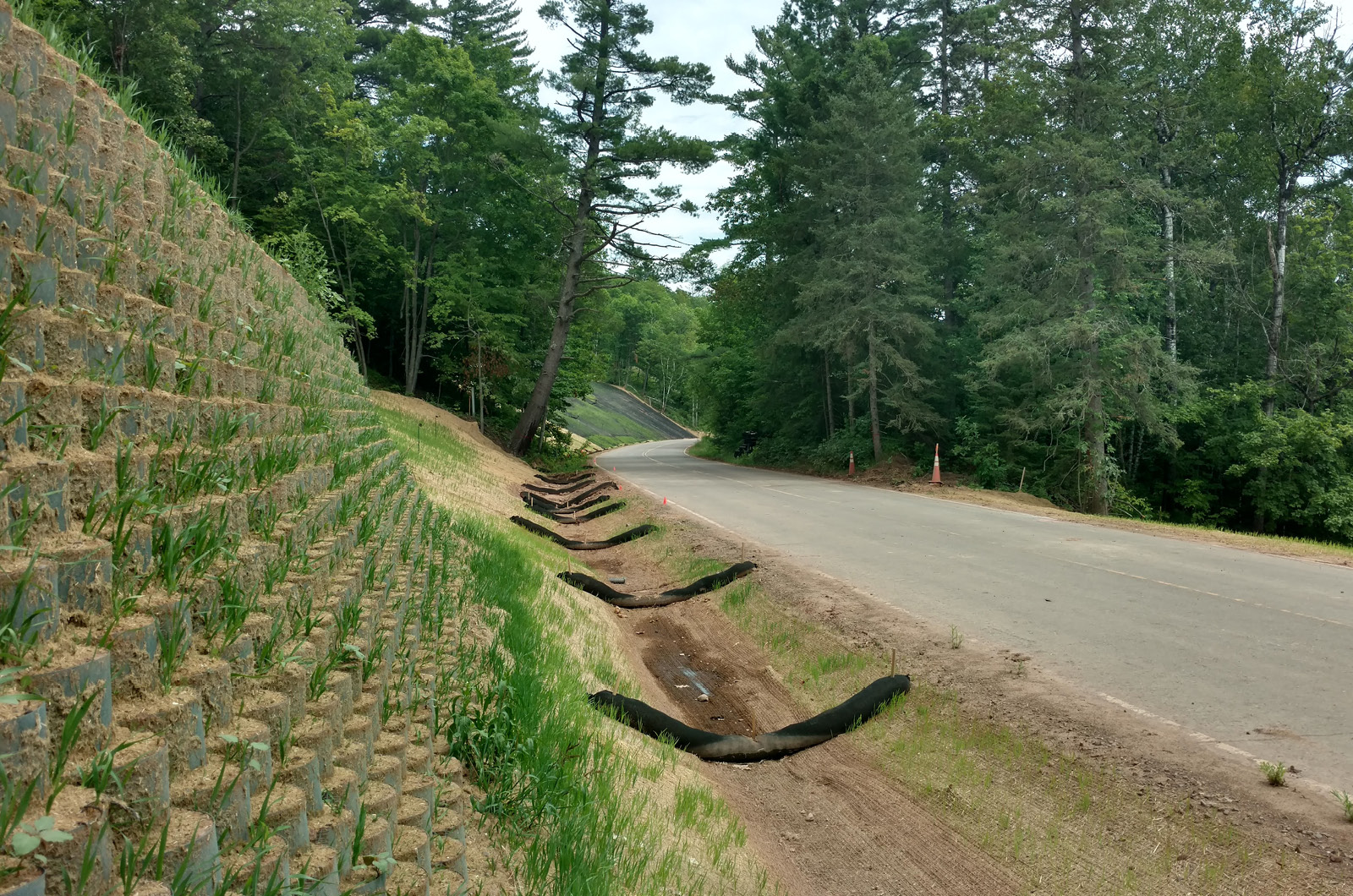The TH 169 Cross Range Expressway project included the final design for 1.55 miles of a two-lane to four-lane expansion located 0.66 miles southwest of CSAH 15 to 0.30 miles east of CSAH 7 in Itasca County. The project also included realigning approximately 1,000 feet of CSAH 15, 400 feet of CSAH 7, and 200 feet of the Mesabi Bike Trail as well as revisions of entrances and road connections. This project completes the Segment 2 connection originally constructed in 2007. Corridors of Commerce funding enabled MnDOT to complete Segment 2.
SRF addressed several design challenges including treating the impervious runoff in an area surrounded by wetlands and high ground water table within the established right of way, maintaining traffic on both CSAH 15 and CSAH 7 due to the inability to provide acceptable detours for either location, and coordinating with an existing gravel pit owner who was actively mining directly adjacent to the proposed roadway. The proposed gravel pit access also was in the vicinity of an abandoned municipal waste site, so construction plans accounted for the collection and disposal of any hazardous waste material encountered.
Roadway Design and Plans. SRF completed final design for the reconstruction of the existing two-lane roadway to a four-lane divided roadway for 1.9 miles where the eastern termini was reduced back to two-lane roadway. SRF’s design addressed high ground water, sight distance and access to CSAH 7 and CSAH 15, and Schwartz Gravel Pit. Plans also accommodated gravel pit operations during construction. Due to high ground water, the subsurface drainage design was incorporated to provide positive drainage from the center depressed median to the external roadway ditches.
Signing and Striping Plans. Signing plans depicting the replacement of signing along this segment of TH 169 were developed concurrent with the roadway design. Signage was also designed to adhere to new retroreflectivity standards. Replacement signing was designed to match updated state standards. Striping was designed to current MnDOT requirements.


